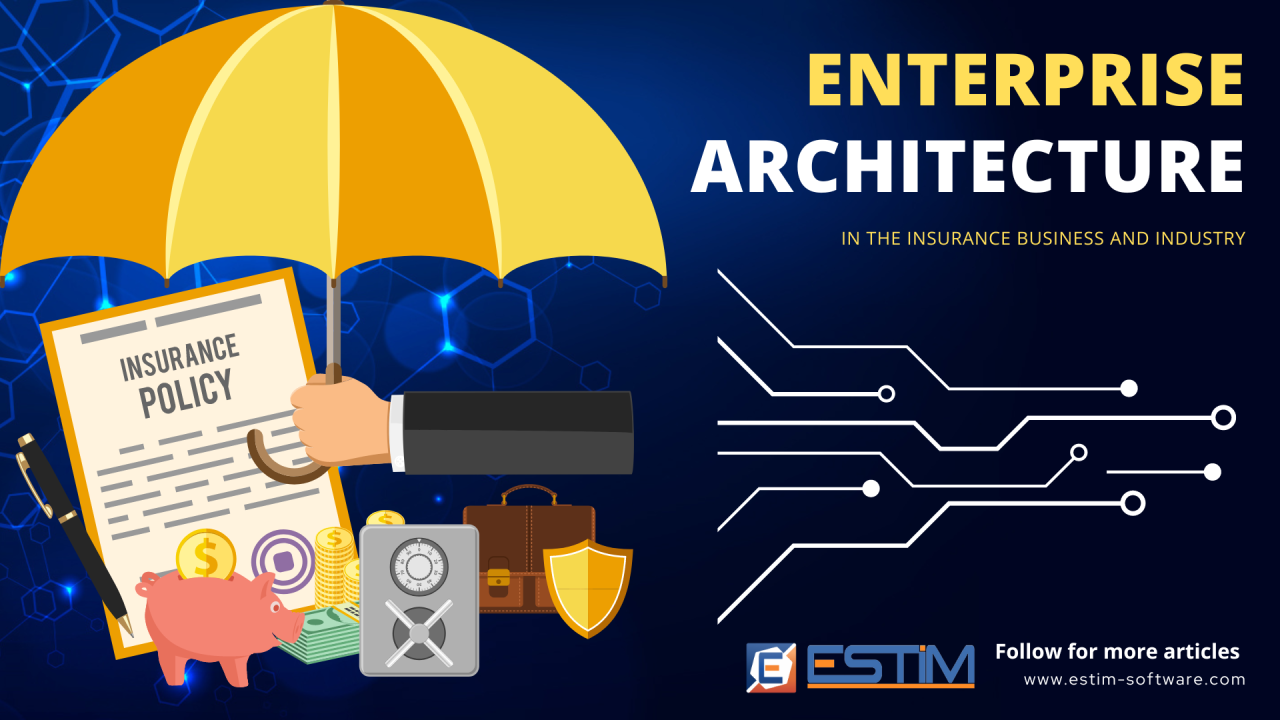
Maximizing Efficiency and Streamlining Operations: The Importance of Enterprise Architecture in the Insurance Industry
The insurance industry, like all other businesses in the modern world, must keep pace with the ever-changing market trends by continuously adapting and evolving. To keep up with the market and offer their customers the best possible services, insurance companies need to adopt a structured approach to their operations. This is where Enterprise Architecture (EA) comes into play.
Why do we need an Enterprise Architecture in insurance business?
EA is a framework that aligns an organization's business and IT strategies, enabling them to meet their goals efficiently and effectively. The architecture provides a clear view of the organization's business processes, information systems, data, and technology infrastructure. This helps the organization to identify and rectify areas that need improvement, minimize risks, and optimize resources. EA helps organizations to take a strategic approach to their operations, making them more efficient and effective.
Implementing EA in the insurance industry can be challenging. Some of the common challenges include resistance to change, lack of technical expertise, and limited resources. Organizations may face resistance from employees who are not familiar with the concept of EA, making it difficult to implement. Additionally, implementing EA may require technical expertise that the organization may not have in-house, leading to additional training costs. Finally, implementing EA may require significant financial and human resources, which can be a challenge for smaller organizations.
EA benefits in the insurance industry
EA has several benefits for the insurance industry. Firstly, it helps to create a clear and standardized view of the organization's processes, which makes them more manageable and efficient. This improves the organization's ability to manage risks, streamline their processes, and optimize resources. Secondly, EA provides a comprehensive view of the organization's IT infrastructure and data, which enables the organization to make informed decisions based on data-driven insights. This helps the organization to develop innovative and effective solutions to meet the needs of their customers.
Success story of EA implementation in the insurance industry is that of Allianz Insurance. In 2013, Allianz implemented an EA framework that helped the company to streamline its operations and optimize its resources. The framework enabled the company to develop a standardized view of its business processes and IT infrastructure, improving its ability to manage risks and make informed decisions. As a result, Allianz was able to deliver improved customer services, reduce costs, and increase operational efficiency.
To build an effective EA in the insurance industry, the organization needs to follow a structured approach. The following steps can help to build an effective EA in the insurance industry:
领英推荐
The key success factor in implementing an Enterprise Architecture in an insurance business is the involvement of stakeholders. The stakeholders, including business leaders, IT leaders, and domain experts, need to work collaboratively to establish a shared vision and a roadmap for the EA implementation. EA Tools also play a significant role in the success of EA implementation in an insurance business. They provide a platform for capturing, documenting, and analyzing enterprise information, helping organizations to make informed decisions. There are several EA tools available in the market, and choosing the right tool can be a daunting task. It is advisable for organizations to select a tool that caters to their unique demands and prerequisites. Some of the key features to consider when selecting an EA tool include:
ESTIM is an EA tool that can fulfill all these capabilities, making it a valuable asset for insurance businesses. Its flexibility allows for adjustments to be made in response to changes in the enterprise landscape, ensuring that the EA remains relevant and up-to-date. The tool's integration capabilities ensure that it can seamlessly integrate with other tools used in the organization, promoting collaboration and communication between different departments. As insurance businesses grow, ESTIM's scalability enables it to expand with the organization, accommodating increased demands and data. ESTIM's user-friendliness makes it easy for stakeholders to use and understand, reducing the need for extensive training and maximizing its value. By leveraging ESTIM as an EA tool, insurance businesses can overcome the challenges of EA implementation and achieve their business objectives efficiently and effectively. In conclusion, the importance of implementing Enterprise Architecture in the insurance industry cannot be overstated. EA enables organizations to streamline their operations, optimize resources, and make informed decisions based on data-driven insights. Allianz Insurance's successful implementation of EA in 2013 is a testament to the benefits that EA can bring to the industry. To build an effective EA, insurance organizations need to follow a structured approach, involve stakeholders, and select the right EA tools. ESTIM, as an EA tool, fulfills all the critical capabilities that insurance businesses require, making it an invaluable asset. Therefore, I encourage insurance businesses to adopt EA and leverage ESTIM to achieve their business objectives efficiently and effectively.
In conclusion, the Enterprise Architecture plays a vital role in the insurance industry. It enables organizations to align their IT strategy with their business strategy, reducing costs and improving efficiency. Although implementing an EA may present challenges, such as resistance to change, organizations can overcome these challenges by involving stakeholders and selecting the right EA tools. By leveraging EA tools, organizations can make informed decisions and achieve their business objectives.
Sources:
https://www.gartner.com/smarterwithgartner/the-value-of-enterprise-architecture-for-insurance/
https://www2.deloitte.com/content/dam/Deloitte/se/Documents/risk/2015-Insurance-Industry-Outlook-enterprise-architecture.pdf